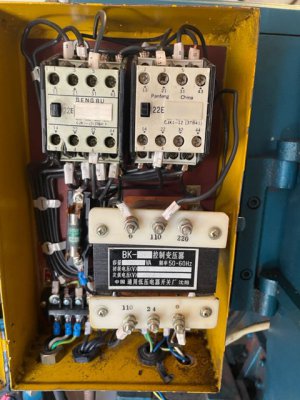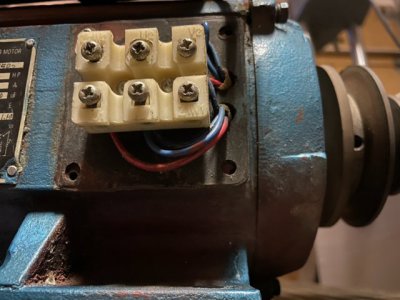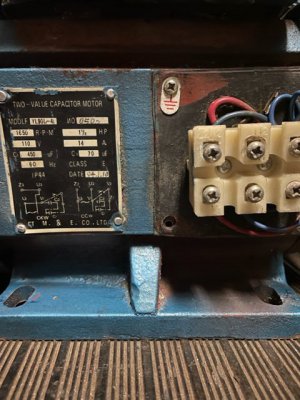Hello,
Have read most of past threads relating to this problem but unable to solve my problem I am new to machining and very green to electrical. Will try to keep short
and on point.
Lathe Model Smithy BZ239. 110v similar to ENCO 110-2034
Acquired lathe recently. Forward and Reversed worked, but Forward not working since delivered and set up in garage
Forward hums but very little movement and will trip circuit breaker.
Replaced both capacitors on motor
Tightened all wire screws
Emergency button and other buttons work as expected
Switched power leads on micro switches and both appear to work fine.
Assume wiring at motor is correct as it worked before. However the wire leads out of motor are 5 blue
and 2 red. The red is larger gauge than blues. So no idea which is what when attempting to wire motor direct to a pig tail.
Energizing contactors, cause set buttons to recess.
QUESTION On testsing OHMs on wires from beginging of power source to contactors., I assume that the hot and common,( Black and White) wires should not have
an ohm reading when testing Black to White. However they do show a connection. This leads me to believe there is a short somewhere. Is this a bad assumption?
Any advice would be appreciated. Thank you
Have read most of past threads relating to this problem but unable to solve my problem I am new to machining and very green to electrical. Will try to keep short
and on point.
Lathe Model Smithy BZ239. 110v similar to ENCO 110-2034
Acquired lathe recently. Forward and Reversed worked, but Forward not working since delivered and set up in garage
Forward hums but very little movement and will trip circuit breaker.
Replaced both capacitors on motor
Tightened all wire screws
Emergency button and other buttons work as expected
Switched power leads on micro switches and both appear to work fine.
Assume wiring at motor is correct as it worked before. However the wire leads out of motor are 5 blue
and 2 red. The red is larger gauge than blues. So no idea which is what when attempting to wire motor direct to a pig tail.
Energizing contactors, cause set buttons to recess.
QUESTION On testsing OHMs on wires from beginging of power source to contactors., I assume that the hot and common,( Black and White) wires should not have
an ohm reading when testing Black to White. However they do show a connection. This leads me to believe there is a short somewhere. Is this a bad assumption?
Any advice would be appreciated. Thank you




